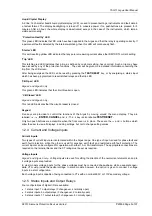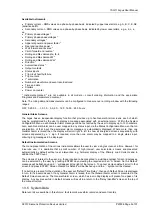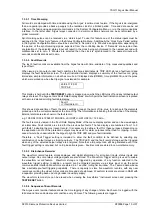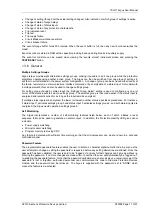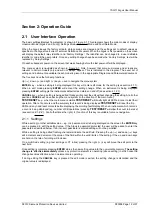
7SG11 Argus User Manual
©2013 Siemens Protection Devices Limited
P20006 Page 16 of 37
Section 3: Installation
3.1 Unpacking, Storage and Handling
On receipt, remove the Argus from the container in which it was received and inspect it for obvious damage. It is
recommended that the Argus relay not be removed from the case. To prevent the possible ingress of dirt, the
sealed polythene bag should not be opened until the Argus is to be used.
If damage has been sustained, a claim should immediately be made against the carrier, also inform Siemens
Protection Devices Limited, using the Defect Report Form in the Maintenance section of this manual.
When not required for immediate use, the Argus should be returned to its original carton and stored in a clean, dry
place.
The Argus relay contains static sensitive devices. These devices are susceptible to damage due to static
discharge and for this reason it is essential that the correct handling procedure is followed.
The Argus relay’s electronic circuits are protected from damage by static discharge when it is housed in its case.
When the relay has been withdrawn from the case static handling procedures should be observed as follows: -
Before removing the Argus from its case the operator must first physically touch the case to ensure that
he/she is at the same potential.
The Argus relay must not be handled by any of the terminals on the rear of the chassis
Argus relays must be packed for transport in an anti-static container
Ensure that anyone else handling the Argus is at the same potential
As there are no user serviceable parts in the Argus relay, then there should be no requirement to remove any
modules from the chassis. If any modules have been removed or tampered with, then the guarantee will be
invalidated. Siemens Protection Devices Limited reserves the right to charge for any subsequent repairs.
3.2 Recommended Mounting Position
The Argus uses a liquid crystal display (LCD) which is used in programming and for operation. The LCD has a
viewing angle of ±70° and is back-lit. However, the best viewing position is at eye level and this is particularly
important when using the built-in instrumentation features.
The LCD contrast will normally be correct for all positions and environments, however it can be adjusted if
required using the adjustment screw mounted through the fascia to the upper right of the LCD.
The Argus relay should be mounted on the circuit breaker or panel to allow the operator the best access to the
functions.
3.3 Relay Dimensions
The following drawings are available which give panel cut out and mounting details. Refer to the appropriate
Diagrams and Parameters part of the documentation for a cross-reference of case sizes and models.
2995X10004 Overall Dimensions and Panel Drilling for Epsilon E4 Case
2995X10006 Overall Dimensions and Panel Drilling for Epsilon E6 Case
2995X10008 Overall Dimensions and Panel Drilling for Epsilon E8 Case
3.4 Wiring
The Argus should be wired according to the scheme requirements, with reference to the appropriate wiring
diagram. Refer to the appropriate Diagrams and Parameters part of the documentation for a cross-reference of
wiring diagrams and models.
3.4.1 Communications
Fibre-optic ST
TM
(BFOC/2.5) bayonet connectors – 2 per Argus. Glass fibre is recommended for all but the
shortest distances.
When installing fibre ensure that the fibre’s bend radii comply with the recommended minimum for the fibre used –
typically 50mm is acceptable for single fibres.




